Albert House Stables, ideally located between Moulton Road and Bury Road, just 250 yards from the foot of Warren Hill, is one of Newmarket's oldest surviving stables. The House dates from the 1750s, while the stable block currently offers 23 boxes. Although there is no firm evidence to confirm this, on Chapman's 1768 and 1787 maps of Newmarket Racing Stables a stable close to the junction of Bury Road, the High Street and the present-day Moulton Road was marked on the map and was owned by Mr Johnson. Mr Johnson, based in Cambridgeshire, was a prominent figure in the racing world from the late 1750s through to the 1790s and had many runners at Newmarket. On 2nd October 1760 Mr Johnson's unnamed chestnut filly was 4th behind Mr Croft's grey colt in a £50 3-year-old race from the Running Gap to the Stand. Furthermore, he was recorded in each Racing Calendar from 1758 to the late 1780s. On Monday 1st May 1769 Mr Johnson's chestnut colt Harlequin (4/5 fav) defeated Me William South's Precarious (evens) for 10 Guineas over the Rowley Mile.
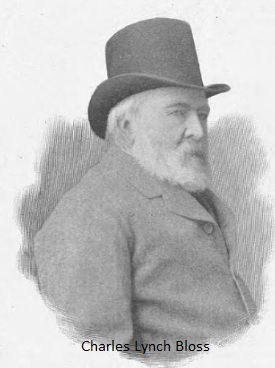
Born in 1812 Charles Lynch Bloss, along with his more famous brother George, was a Newmarket trainer who trained for Lord Hartington for a considerable time before he became the Duke of Devonshire in 1891. He was recorded as trainer at Albert House in Kelly's Directory of 1858, although between 1863 and 1872 he trained at Bedford House for Captain James Machell before being replaced by Joe Cannon on Tuesday 18th February 1873. After his brother had guided Hermit (SR 2022) to success in the 1867 Epsom Derby and St James's Palace Stakes, Charles worked in partnership with his brother, later training horses for Henry Chaplin. The pair were responsible for the training of the filly Belphoebe who won the 1877 1000 Guineas for Lord Hartington. George, who resided in Cavendish House, which was within the''Beaufort' estate, died on 14th September 1885, leaving the estate to his brother Charles. Among the other prominent members of the turf who Charles trained for were Lord Westmoreland, and Lord Downe. Charles retired from training in 1881 and died on Monday 26th October 1896, aged 84, also at Cavendish House, Newmarket.
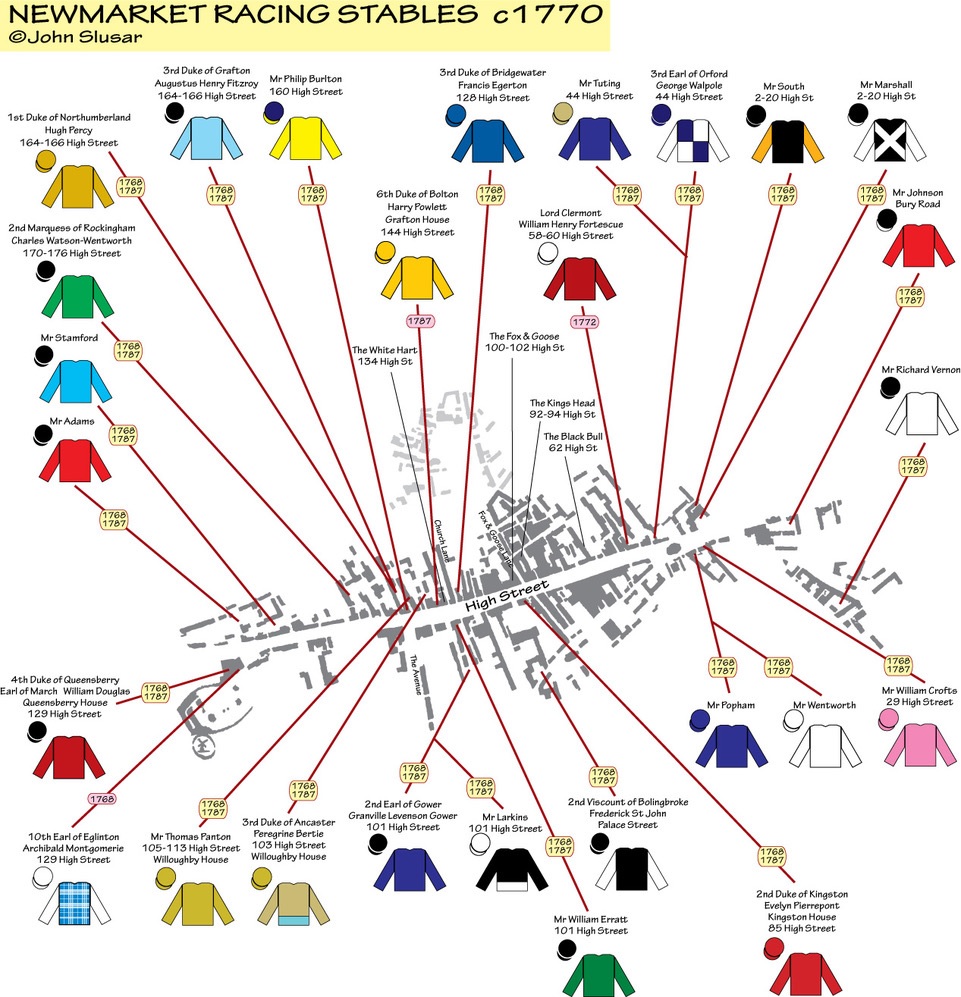
For over 4 centuries racing has been staged in Newmarket, but how have the racecourses evolved from an initial starting point at Fleam Dyke Pumping Station, some 8 miles from the town, with a winning post barely 200 metres from the town centre, into two world recognized, excellent racecourses and a universal acceptance that Newmarket is the Headquarters of racing?
To access an interactive racecourse map showing over 50 individually named racecourses CLICK HERE. The map will enable you to:-
1. Determine when extended races over 8 miles, 6 miles and 4 miles began to be replaced by the courses now visited by thousands annually;
2. Consider how the challenge of crossing the Devil's Dyke was overcome;
3. Contemplate why the town no longer has a steeplechase course despite having at least 5 courses during the past 2 centuries;
4. Examine the practicalities of having up to 48 starting posts and winning posts;
5. Appreciate that it was not financially viable to have an open racecourse spread widely across the heath, with a finishing post barely 200 metres from the town centre;
6. Research how and why the Cambridgeshire Handicap has been contested over 3 different courses.
NOTE: The map does not make mention of 2 particular courses:-
(i) Sefton Course (also known as the Cambridge Road Course)
Source: 1970 Raceform. Used from 1959 to 1975.
(ii) New Circular Course
The Circular Handicap was run on Friday 29th October 1875 on the New Circular Course of about two miles.
Source: London Standard (30th October 1875): ''the horses started near the Turn of the Lands, ran back way of the Cambridgeshire Course towards the Ditch, and afterwards proceeded down the side of the Tan Gallop, and turned into the Rowley Mile near the Bretby Stakes starting post, finishing at the stand at the end of the flat. Except in the hollow near the Cambridgeshire start the runners should have been visible all the way if the sky had been bright and clear''.
Another report hoped that the Circular Handicap would become a feature in future programmes, as it would be contested in front of the new grandstand which would be completed in about a year and would be able to accommodate thousands.
(I am grateful to Tim Cox for bringing attention to these 2 courses.)
Enjoy researching the intriguing history of Newmarket and its many racecourses.
William Arnull, son of well-known Newmarket jockey and trainer Bill Arnull, was born in September 1820. His father, Bill, himself the son of trainer John Arnull, distinguished himself as a jockey with many English Classic victories, including riding Hannibal (SR 2046) to win the 1804 Epsom Derby, Ocatvius (SR 2015) to win the 1812 Epsom Derby, and Blucher (SR 1984) to win the 1814 Epsom Derby. William junior launched his training career in Belgium and France in 1837 aged just 17, training for Vervain Societe. He then returned to England to train for the difficult character Lord Glasgow, James Carr-Boyle, at Middleham, the Lord not only being a difficult character to work for, but also an incredibly unlucky owner. The main reasons for the Lord's bad luck were that he persisted with using unproven bloodlines, failing to name any of his horses until they proved their worth on the racecourse, and quickly disposing of any horse which did not please him on the gallops. Although William remained with the Lord for a longer period than any trainer before or after him, he moved from Middleham to Newmarket where he took over the Albert House stables. He enjoyed an association with some prominent owners, including Lord Orford, Lord Bradford, Lord George Manners, Lord Canterbury, Lord Fitzwilliam and Mr R H Neville. In 1872 he trained Salvanos to land the Cesarewitch for owner Joseph Radcliff in the hands of Fred Archer, and also enjoyed considerable success with Chancellor in 1876, while in 1881 he won the Hamburg Derby with Caesar for Baron Juel Brockdroff. William, and his wife Sarah, had 5 children, 3 boys, William and Ernest who trained in Germany, and Frank who was a great support for William during an illness in the latter part of his life, and who took over from William at Albert House on his death. William did not really recover from his prolomged illness, was in no position to continue to train, and was hit badly by the death of his wife Sarah on 3rd April 1887 at their beloved Albert House. By July 1887 William had agreed to allow trainer Robert Sherwood to make use of the stables at Albert House as he required extra stabling. William died just 4 months after his wife on 14th August 1887 aged 67 and was so well-respected that the shops on Newmarket High Street all closed for his funeral. One of his daughters, Florence, married Richard Waugh who had trained at Russley Park but moved on to train for Kaiser Wilhelm at the Imperial Graditz Stud in Germany.
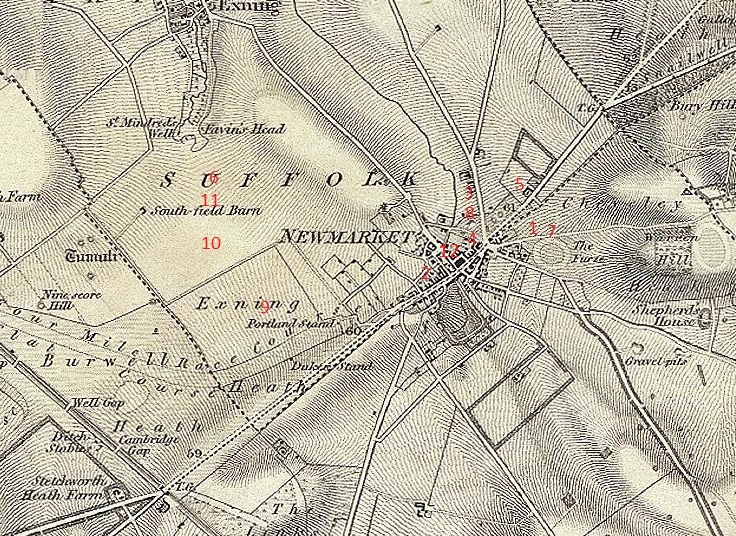
1872 Cesarewitch SALVANOS 11/2 owned by Mr Joseph Radcliff, trained by William Arnull and ridden by Fred Archer
1876 Newcastle Stakes CHANCELLOR owned by Mr Jousiffe, trained by William Arnull and ridden by Harry Custance
1876 Newmarket Summer Handicap CHANCELLOR owned by Mr Jousiffe, trained by William Arnull and ridden by Harry Custance
1876 Queen's Plate at Lewes CHANCELLOR 8/100 fav owned by Mr Jousiffe, trained by William Arnull and ridden by Harry Custance
1876 Brighton Stakes CHANCELLOR 3/1 owned by Mr Jousiffe, trained by William Arnull and ridden by Harry Custance
1881 Hamburg Derby CAESAR owned by Baron Juel Brockdroff, trained by William Arnull and ridden by J Gough
1884-July 1887 Frank Arnull
Frank Arnull, second son of the famous Newmarket racehorse trainer William Arnull, was born at Newmarket St Mary's in 1853 and took over the reins at Albert House in 1884 when his father became too ill to continue, taking full charge when his father was close to death. William Arnull died on 14th August 1887 aged 67, just 4 months after his wife had died. His funeral was marked by all of Newmarket's shops closing, such was the high esteem in which he was held, with the principal mourners being his eldest son, William Arnull junior, his second son Frank, his sister Florence Arnull and his nephew Charles Arnull. It was a positive Who's Who of Newmarket racing statesmen, with James Waugh, John Dawson, Robert Sherwood and William Jarvis also in attendance. Tragically, his son William was to die less than 2 years later in 1889. After holding the fort at Albert House for a short period, Frank Arnull was appointed private trainer to Lord Gerard part way through the 1887 season.before in July 1887 being appointed head lad to Martin Gurry at Bedford Lodge. Later that year he began to train publicly at Ashley House, but in June 1888 Lord Gerard appointed him his private trainer at Middleton Cottage.
July 1887-December 1889 Robert Sherwood senior
Robert Sherwood, born into a racing family whose father Ralph trained Amato (SR 2016) to win the 1838 Epsom Derby, was a very accomplished jockey who later became an equally successful trainer. His highest profile success as a jockey was partnering Wild Dayrell (SR 2032) to success for Mr Francis Popham in the 1855 Epsom Derby, but when he began struggling with his weight he turned his hand to training. He trained St Gatien (SR 2030) to achieve a dead-heat with Harvester in the 1884 Epsom Derby, while later that year he landed the Autumn Double with Florence in the Cambridgeshire and St Gatien in the Cesarewitch, although the story of St Gatien began sometime beforehand with Jack Hammond, a stable hand at Bedford Cottage Stables before he became too heavy to ride. While Jack Hammond continued to be richly rewarded from his ownership of St Gatien, Bob Sherwood also won sufficient on the Classic winner, and the later Autumn Double, to build his own stables shortly after 1884, naming the stables St Gatien in honour of the horse. Such was his success as a trainer that in July 1887 he leased Albert House from William Arnull as an overflow yard. However, Robert's training career was cut short when he suffered an apoplectic fit on Newmarket Heath on Monday 15th October 1894 whilst supervising his horses and was returned to St Gatien House where he died later that week on Friday 19th October 1894. He was replaced at St Gatien by his son, also named Robert.
December 1889-October 1896 William C Waugh
Willie Charles Waugh was born at Gullane in East Lothian on 22 November 1860, the second son and third child of James Waugh. He went to Hungary with his father, coming back with him as his assistant in 1880. After training for three years at Middleton Cottage Willie returned to Hungary where he trained with considerable success,winning the Austrian and German Derbys. For five years he was private trainer to Count Tassile Festetics at Keosztheby, before in December 1889 returning to Newmarket to take over at Albert House. He remained at Albert House until exchanging places with Joe Day, taking over the Sir John Blundell Maple's horses at Falmouth House, residing at Falmouth Cottage in October 1896.
September 1896-1900 Joe Day
In 1895 trainer Percy Peck parted company with Sir John Maple and he was briefly replaced by Joseph Day. During his brief stay at Falmouth House, John/Joseph trained the 1895 2000 Guineas winner Kirkconnel (SR 1966) for Sir John when ridden by John Watts. By the end of the 1896 season Sir John had replaced John/Joseph Day with Willie Waugh, leaving Joe Day to move to Albert House Stables.
1900-December 1901 Richard Croker, E Wishard
In 1900 Mr E Wishard took charge at Albert House Stables, while on Thursday 17th October 1901 Richard Croker put 10 horses in training, all bred in the USA, up for auction at Newmarket's Second October meeting, all 10 being based at Albert House Stables.
December 1901-1939 William (Billy) Walters
William Walters junior was appointed Lord Rosebery's trainer for the 1896 season and enjoyed considerable success in a few short years, particularly with Velasquez and Chelandry. The former won the New Stakes at Ascot and the July Stakes as a two-year-old, and would have had much more success at three were it not for the exceptional Galtee More. Nevertheless, Velasquez was second in the 2000 Guineas and was beaten once again into second in the Epsom Derby behind Galtee More (1/4 fav). Later in the season he came up against Persimmon (12/100 fav) in the Eclipse Stakes at Sandown, but did enjoy success of his own in the Prince of Wales's Stakes at Newmarket. Walters guided Chelandry to victories in the National Breeders Produce Stakes and Woodcote Stakes in her two-year-old days, going on to win the 1897 1000 Guineas, before running second in both the Oaks and St Leger. In October 1900 Lord Rosebery decided to sever all his connections with the turf, sending all of his horses in training to Newmarket to be sold on Thursday 25th October 1900. In December 1901 William Walters junior moved all of his horses to Albert House Stables, previously occupied by Mr E Wishard. In July 1906 the Sporting Life listed all of the Newmarket Stables together with their respective trainers. William Walters junior was listed at Albert House, and continued to train there for the next 3 decades.
1927 Cambridgeshire NIANTIC (dead-heated with Medal) owned by Mr J Sharp, trained by William Walters jnr and ridden by Willie Stephenson
1929 Ribblesdale Stakes SIR COSMO owned by Sir Richard Charles Garton, trained by Billy Walters and ridden by Joe Childs
1930 July Cup SIR COSMO owned by Sir Richard Charles Garton, trained by Billy Walters and ridden by George Swann
1940-1952 Charles Lawsell Long
At some point during, or after, the Second World War Albert House was taken over by Charles Lawsell Long who trained a few horses. Charles died at Albert House in January 1952 aged 72.
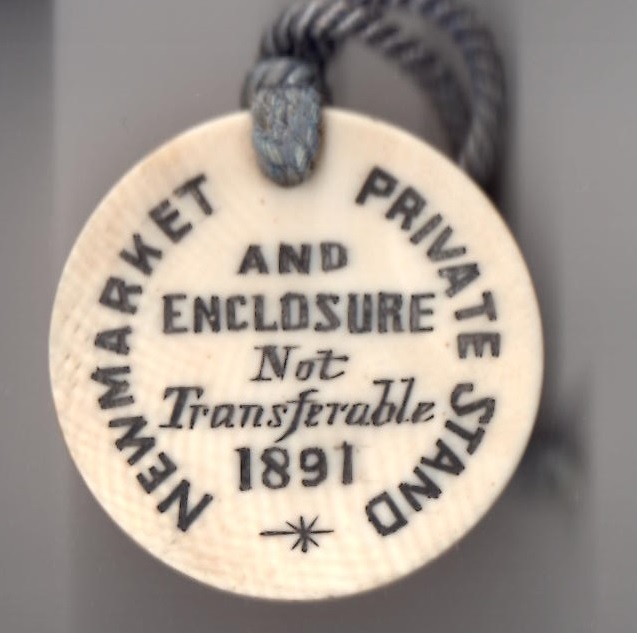
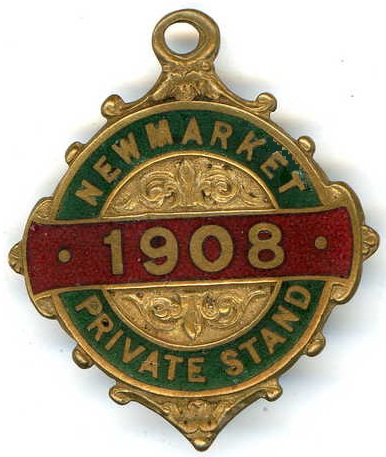
1968-1985 Bruce Hobbs
During the 20-year period Bruce Hobbs leased Palace House Stables he made use of Albert House Stables as an overflow yard, along with Butler's Yard where he called on an additional 10 boxes. He based some of lucky owner George Cambanis's young horses at the Stables, including National Stakes winner Stilvi and Dewhurst Stakes winner, and top rated 2-year-old, Tromos.
1971 National Stakes at Sandown STILVI (evens fav) owned by George Cambanis, trained by Bruce Hobbs and ridden by Geoff Lewis
1978 Dewhurst Stakes TROMOS 11/4 owned by George Cambanis, trained by Bruce Hobbs and ridden by Kipper Lynch
Harry Thomson Jones
Although Harry Thomson Jones was based at Green Lodge Stables, and was able to call upon a dozen boxes at The Woodlands, he also extended into neighbouring Hurworth House. However, it is believed that he based some of his horses at Albert House for a period, although the exact dates are unknown.
1985-1991 Lord John Fitzgerald
John Fitzgerald, second son of the 8th Duke of Leinster, Gerald and his wife Anne, was born in Kilkea Castle in County Kildare on 3rd March 1952 and was educated at Millfield School, Somerset. He was accepted to the Royal Military Academy, Sandhurst, where he served in the 5th Royal Inniskilling Dragoon Guards, reaching the rank of Captain, but upon leaving the Army John sought a career in racing. During his time in the Army he had ridden as an amateur jockey, although he only ever rode 2 winners despite riding in over 100 races. He gained experience in racing stables by assisting Bruce Hobbs and Harry Thompson Jones before launching his own training, purchasing Albert House Stables in 1985, sending out Kayudee to win the 1985 Cesarewitch for Kenton Utilities and Developments Ltd. He enjoyed further early success with Sizzling Melody, guiding the horse to victories in the 1986 Norfolk Stakes, the Flying Childers Stakes and Prix du Petit Couvert at Longchamp, wins which earnt him the title of leading sprinter. That early success was not repeated, except for a 1990 Cesarewitch win by Trainglot for the Marquesa S de Maratalla, and the recession in the country in the late 1980s had a devastating effect on his business. He was enticed to Dubai by Sheikh Mohammed in 1992, overseeing the creation of the Emirates Racing Authorty during his time in Dubai. He then spent time in Hong Kong and Macau before taking up an appointment as private trainer at Hoppegarten, Germany. In 2005 he returned to England to become racing manager to Kirsten Rausing at her Lanwades Stud. John became ill with stomach cancer in 2013 and died on 3rd August 2016 aged 63.
1985 Cesarewitch KAYUDEE 7/1 owned by Kenton Utilities and Development Ltd, trained by Lord John Fitzgerald and ridden by Tony Murray
1986 Norfolk Stakes SIZZLING MELODY 5/1 owned by Mary Watt, trained by Lord John Fitzgerald and ridden by Richard Hills
1986 Flying Childers Stakes SIZZLING MELODY 6/4 owned by Mary Watt, trained by Lord John Fitzgerald and ridden by Richard Hills
1987 Prix du Petit Couvert SIZZLING MELODY owned by Mary Watt, trained by Lord John Fitzgerald and ridden by Richard Hills
1990 Cesarewitch TRAINGLOT 13/2 owned by Marquesa S de Moratalla, trained by Lord John Fitzgerald and ridden by Willie Carson
1991-1997 Giles Bravery
Giles Bravery was brought up in a racing environment, so it was natural for him to pursue a career in the industry. He began his working life with cattle in Australia before returning to England in 1987, taking up an appointment at the National Stud. He then switched jobs and countries, taking up a post at Haras de la Louviere in France., preparing yearlings for the sale ring. Between 1986 and 1991 Lord John Fitzgerald trained at Albert House Stables, Newmarket, and was assisted by Giles on his return from France, although Giles moved on to gain further experience with Mark Tompkins at Flint Cottage. When Lord John was appointed to a post in Dubai by Sheikh Mohammed in 1991, Giles took charge of Albert House Stables, ably supported by his wife Fiona. His first flat race winner was Time's Arrow in a Southwell seller on Wednesday 10th June 1992, although he had previously saddled the winners of 4 National Hunt races. He made a success of his time at Albert House and the family moved to Revida Place, on the Hamilton Road, in 1997.
1998-2014 Vacant
After Giles Bravery transferred his string from Albert House Stables to Revida Place, the Albert House Stables remained vacant for a considerable period.
2015-2018 Richard Spencer, Phil Cunningham
Richard Spencer began working in racing stables in 2004, beginning with Peter Bowen in Wales before transferring to Barry Hills stable at Lambourn in 2006. When Barry retired Richard continued to work at the stable under Barry's son Charlie Hills before deciding to widen his experience by moving to Newmarket. In 2012 he worked at Michael Bell's Fitzroy House Stables, and during his time at the stable he rode Bradley, trained by Fergal O'Brien, to win the Royal Artillery Gold Cup at Sandown. In 2015 he thought the time was right to launch his own training career, backed by Phil Cunningham, he joined Rebel Racing at Albert House. One of his most celebrated successes at Albert House was winning the Coventry Stakes with Rajasinghe owned by Rebel Racing. In February 2018 Cunningham purchased the historic 47-box Sefton Lodge Stables from Martyn Meade and invited Spencer to head up the venture. He put Albert House onto the market for £1.4 million having spent almost £1million restoring the old, historic stables during his time there.
2017 Coventry Stakes RAJASINGHE 11/1 owned by Rebel Racing, trained by Richard Spencer and ridden by Steve Donoghue
2018-2020 Vacant
2021-present Chris Dwyer
Christopher Ambrose Dwyer, born in Cork on 20th December 1948, moved with his family to London in 1961 and left school in 1964. He joined the Staff Ingham Stable at Epsom at a time when Scobie Breasley rode work at the stables, the same year that Scobie rode Santa Claus (SR 2073) to victory in the 1964 Epsom Derby. Chris's first winner, Nahum, was at Lingfield Park on 15th April 1967, and he spent a happy 7 years as apprentice with Staff Ingham before moving to Newmarket to ride work for Sir Michael Stoute. Chris then Moved to Malton in 1971 to join Jimmy Etherington, and married Sylvia later that year on 18th September. He had further spells with Frank Carr, Alec Stewart and Michael Stoute before becoming assistant trainer with Ian Matthews back in Newmarket. In 1995 he retired from race riding and successfully applied for a trainer’s licence, basing himself at Cedar Lodge Stables on the Hamilton Road. Two particular horses earned Chris a number of victories, Mia's Boy and Cyrano's Lad. In 2005 he left Cedar Lodge, transferring his string to Brickfield Stud and then Georgia House Stud in Burrough Green, Newmarket, where he retired in 2018 aged 71. However, he was tempted out of retirement in readiness for the 2021 season by Global Group Racing, a boutique operation owned by Hong Kong resident Johnny Han.
CAESAR (1881 Hamburg Derby)
SIR COSMO (1929 Ribblesdale Stakes, 1930 July Cup)
SIZZLING MELODY (1986 Norfolk Stakes, Flying Childers, 1987 Prix du Petit Couvert)
TROMOS (1978 Dewhurst Stakes)
NIANTIC (1927 Cambridgeshire)



